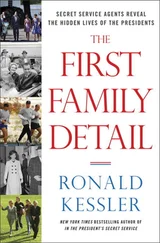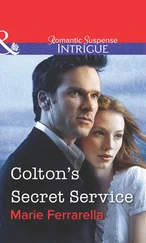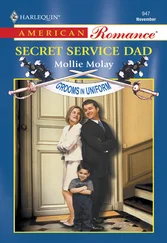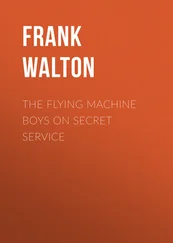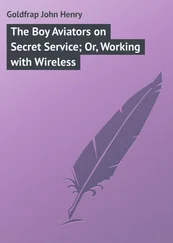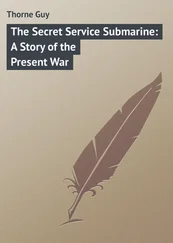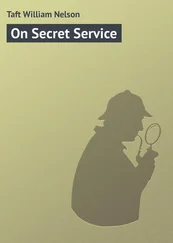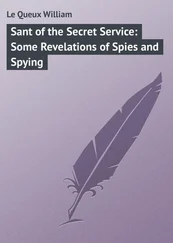The fact that the Secret Service cuts counterassault teams to two agents and bows to staff demands that the teams remain at a great distance from protectees points to the fact that the agency is geared to deal with a lone gunman rather than a full-scale terrorist attack. The agency’s reliance on the MP5 rather than the far more powerful M4 that a terrorist may use is further evidence of that. That the Secret Service, in contrast to the FBI and the military, ignores the need for regular training and firearms requalification highlights a complete disregard for the sanctity of the Secret Service’s mission. In some cases, members of counter assault teams have not shot the SR-16 in more than a year.
“Why must demonstrations at the Rowley center for VIPs, politicians, and others be rehearsed?” asks an agent on one of the major protective details. “It comes down to the instructors and supervisors knowing that if it is not rehearsed, we will look like a bunch of fools running around not knowing what to do.”
How can something as shocking as waiving magnetometer screening go on for so long without being exposed? The same way the FBI and CIA allowed the so-called wall to prevent them from sharing information with each other for so long, impairing the bureau’s ability to detect and stop a terrorist attack. The same way investment banks knowingly acquired substandard mortgage securities, impairing the American economy and requiring the expenditure of hundreds of billions of dollars by the U.S. Treasury to shore it up. The same way the Securities and Exchange Commission brushed aside specific allegations that Bernard Madoff was running a Ponzi scheme.
“If this were a private company, they couldn’t survive,” an agent says. “But it’s the government, and nobody’s accountable.”
The effect of an assassination of a president or presidential candidate is unimaginable. If Abraham Lincoln had not been assassinated, Andrew Johnson, his successor, would not have been able to undermine Lincoln’s efforts to reunite the nation and give more rights to blacks during the Reconstruction period. If John F. Kennedy had not been assassinated, Lyndon Johnson likely never would have become president. If Robert F. Kennedy had not been killed and had won the presidency, Richard Nixon might never have been elected.
By definition, an assassination threatens democracy. To be sure, Secret Service management understands the importance of that mission. On the fifty-eighth anniversary of the death of Officer Leslie Coffelt, Nick Trotta, the head of the Office of Protective Operations, wrote a memo to all agents. It was Coffelt who defended President Truman at Blair House. Dying from a wound, Coffelt leaped to his feet, propped himself against a booth, and fired at Griselio Torresola’s head, taking out a would-be assassin.
In his memo, Trotta wrote that we “must not fail in our protective mission. We are protecting the lives of those that our country expects we protect at all costs.” Trotta went on, “We are here to make sure that you have the tools that are needed to do what you are expected to do.”
Written just before the 2008 election, the memo closed by saying, “In these last few days before the presidential election, as those on the campaign trail, your travel remains nonstop, you must remain ever so vigilant, ever so attentive to detail. We do this as the nameless agent, the nameless officer. We continue to do this without any fanfare or pats on the back.”
Trotta framed the mission well, but his words ring hollow. Secret Service management is oblivious to how its own failings undermine that mission and the safety of its protectees.
Neither the DHS inspector general nor Congress has penetrated the agency’s invincible veneer to uncover the shortcomings. And so long as presidents continue to select directors from within the Secret Service to lead the agency, its culture of denial will remain intact.
“We don’t have enough people or the equipment to do protection the way they advertise we do,” a veteran agent says. “And how we have not had an incident up to this point is truly amazing, a miracle.”
Most Americans have no idea what is behind protecting a president, the first family, the vice president, and presidential candidates. They may see agents at an event or a shopping mall outside a store—dressed in suits, wearing the telltale clear spiral wire that wraps around their ear and disappears somewhere down their shirt collar. And then they think of the news story they read that morning, that the president or a presidential candidate is in town, and they realize who they are.
If the agents seem a little distracted from the hustle of the street, marching to a different drummer, it is because they are tuning into a sort of different dimension, one of heightened awareness. They are looking for anything out of the ordinary in the passersby—a man in a strange hat who nervously looks into the store. Anything odd, like beads of sweat on a forehead when the day is chilly.
It is a good day when the agents can epitomize the poet John Milton’s line, “They also serve who only stand and wait.”
Most days aren’t like that. Most days entail risk and demands and meticulous planning—sabotaged by the Secret Service’s practice of dangerously cutting corners. Agents who are concerned that the Secret Service is on the brink of a disaster say that only a director appointed from the outside can make the wholesale changes that are needed in the agency’s management and culture.
Without those changes, an assassination of Barack Obama or a future president is likely. If that happens, a new Warren Commission will be appointed to study the tragedy. It will find that the Secret Service was shockingly derelict in its duty to the American people and to its own elite corps of brave and dedicated agents.
Epilogue

AFTER ASSASSINATING PRESIDENT Lincoln, John Wilkes Booth escaped capture for twelve days. But on April 26, 1865, federal forces cornered, shot, and killed him in a gun battle. Four of his fellow conspirators, including one woman, were tried and hanged.
Charles Guiteau, who fatally shot the newly elected President James Garfield on July 2, 1881, was hanged on June 30, 1882.
Leon Czolgosz, a factory worker who shot President William McKinley on September 6, 1901, was executed by electrocution. “I killed the president because he was the enemy of the good people—the good working people,” he said before his death. “I am not sorry for my crime.”
Oscar Collazo, the surviving Puerto Rican nationalist who tried to assassinate President Truman, was convicted of first degree murder in March 1951. He was sentenced to death. A few weeks before he was to be executed in 1952, Truman commuted his sentence to life in prison. Truman said he didn’t want to provide Puerto Rican nationalists with a martyr. In 1979, President Carter pardoned Collazo, who then went back to Puerto Rico as a hero. He died in 1994.
In 1964, the Warren Commission confirmed FBI findings that Lee Harvey Oswald acted alone when he shot President Kennedy. Two days after he shot Kennedy, Oswald was being transferred under police custody when Jack Ruby shot him to death.
Sirhan B. Sirhan was convicted of the murder of Robert F. Kennedy on April 17, 1969, and sentenced to death in a gas chamber. The sentence was commuted to life in prison in 1972 after the California Supreme Court invalidated all pending death sentences imposed in California prior to 1972.
Confined at the California State Prison, Sirhan told a parole board, “I sincerely believe that if Robert Kennedy were alive today, I believe he would not countenance singling me out for this kind of treatment. I think he would be among the first to say that, however horrible the deed I committed was, that it should not be the cause for denying me equal treatment under the laws of this country.”
Читать дальше


